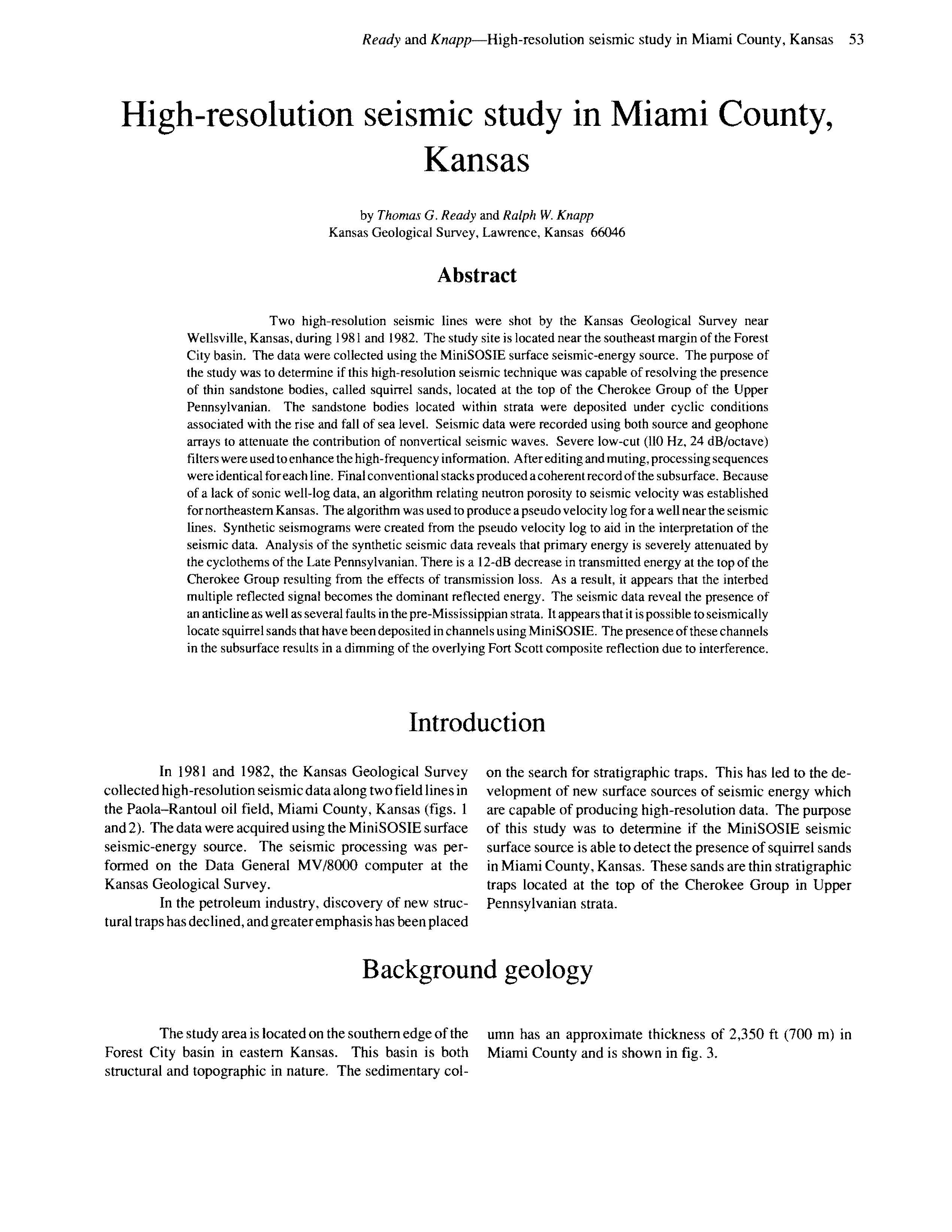High-resolution seismic study in Miami County, Kansas
DOI:
https://doi.org/10.17161/kgsbulletin.no.226.20494Abstract
Two high-resolution seismic lines were shot by the Kansas Geological Survey near Wellsville, Kansas, during 1981 and 1982. The study site is located near the southeast margin of the Forest City basin. The data were collected using the MiniSOSIE surface seismic-energy source. The purpose of the study was to determine if this high-resolution seismic technique was capable of resolving the presence of thin sandstone bodies, called squirrel sands, located at the top of the Cherokee Group of the Upper Pennsylvanian. The sandstone bodies located within strata were deposited under cyclic conditions associated with the rise and fall of sea level. Seismic data were recorded using both source and geophone arrays to attenuate the contribution of nonvertical seismic waves. Severe low-cut (110 Hz, 24 dB/octave) filters were used to enhance the high-frequency information. After editing and muting, processing sequences were identical for each line. Final conventional stacks produced a coherent record of the subsurface. Because of a lack of sonic well-log data, an algorithm relating neutron porosity to seismic velocity was established for northeastern Kansas. The algorithm was used to produce a pseudo velocity log for a well near the seismic lines. Synthetic seismograms were created from the pseudo velocity log to aid in the interpretation of the seismic data. Analysis of the synthetic seismic data reveals that primary energy is severely attenuated by the cyclothems of the Late Pennsylvanian. There is a 12-dB decrease in transmitted energy at the top of the Cherokee Group resulting from the effects of transmission loss. As a result, it appears that the interbed multiple reflected signal becomes the dominant reflected energy. The seismic data reveal the presence of an anticline as well as several faults in the pre-Mississippian strata. It appears that it is possible to seismically locate squirrel sands that have been deposited in channels using MiniSOSIE. The presence of these channels in the subsurface results in a dimming of the overlying Fort Scott composite reflection due to interference.
Downloads

